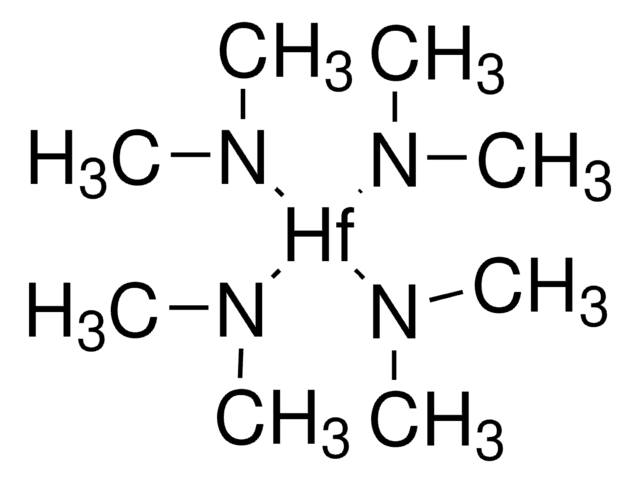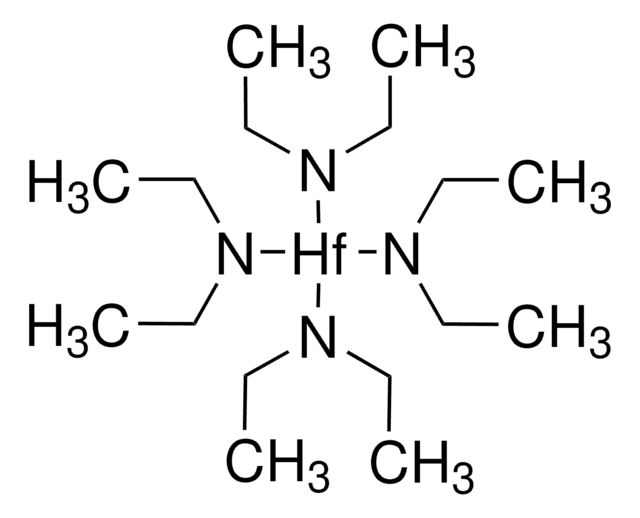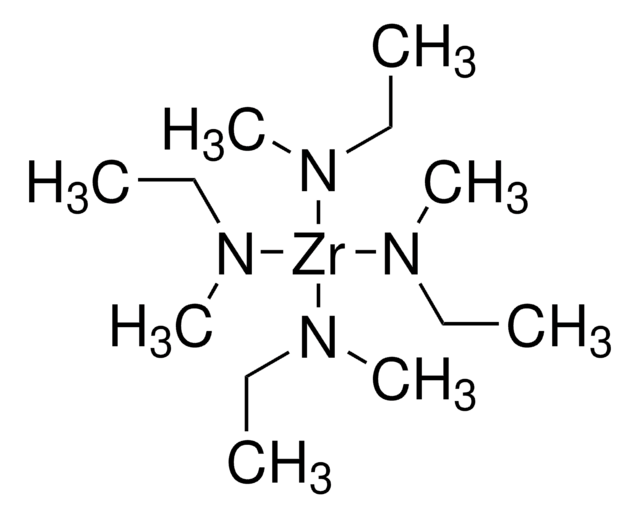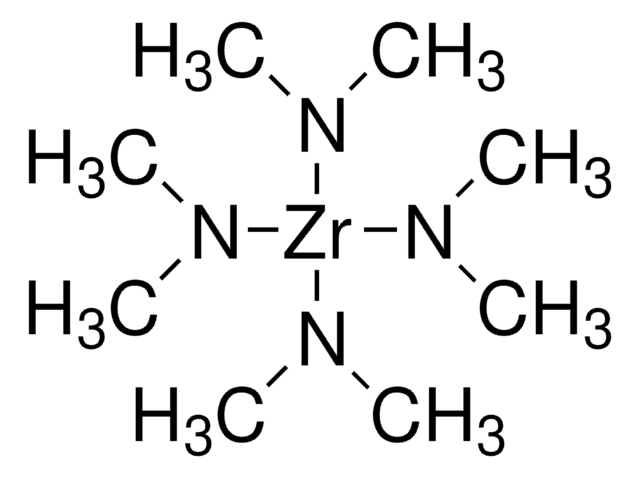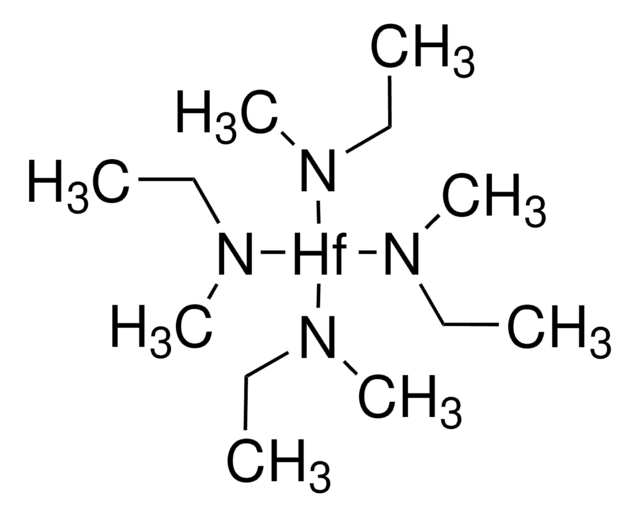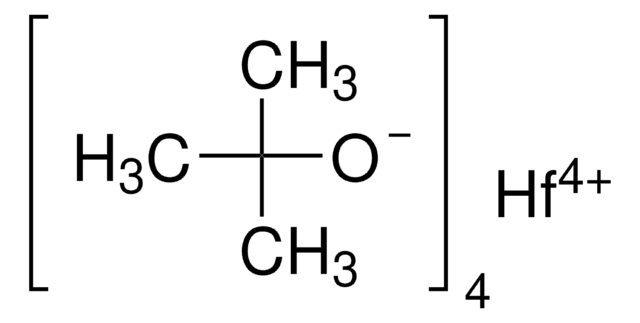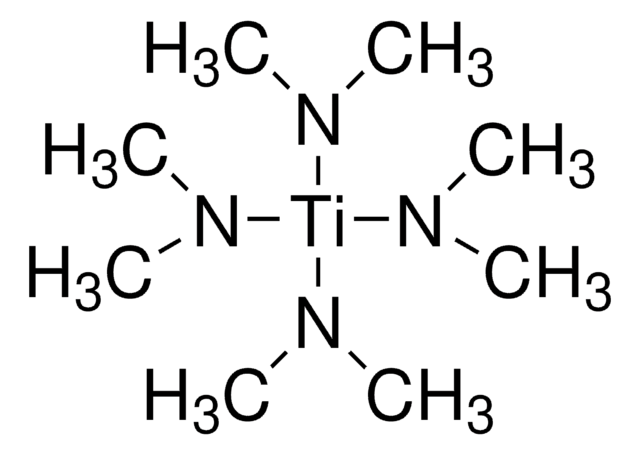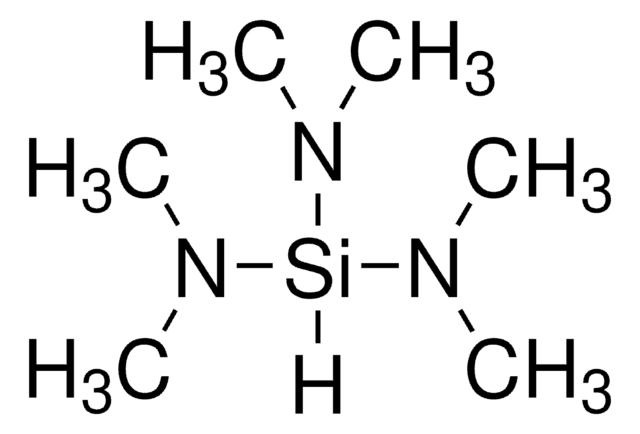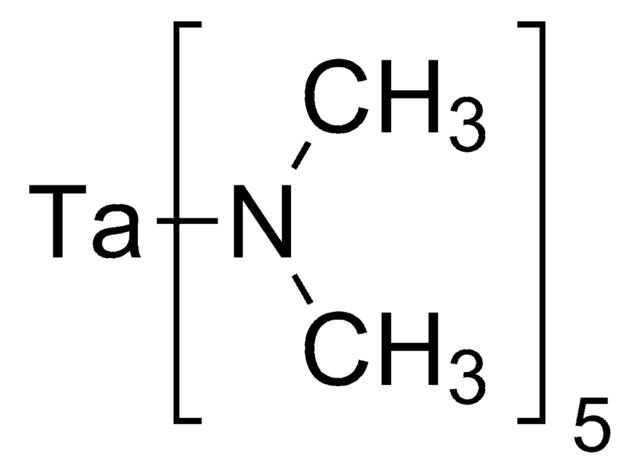553123
Tetrakis(ethylmethylamido)hafnium(IV)
≥99.99% trace metals basis
Synonyme(s) :
TEMAH, Tetrakis(ethylmethylamino)hafnium(IV)
About This Item
Produits recommandés
Niveau de qualité
Essai
≥99.99% trace metals basis
Forme
liquid
Pertinence de la réaction
core: hafnium
Impuretés
Purity excludes ~2000 ppm Zirconium
pb
78 °C/0.01 mmHg (lit.)
Pf
<-50 °C
Densité
1.324 g/mL at 25 °C (lit.)
Chaîne SMILES
CCN(C)[Hf](N(C)CC)(N(C)CC)N(C)CC
InChI
1S/4C3H8N.Hf/c4*1-3-4-2;/h4*3H2,1-2H3;/q4*-1;+4
Clé InChI
NPEOKFBCHNGLJD-UHFFFAOYSA-N
Vous recherchez des produits similaires ? Visite Guide de comparaison des produits
Catégories apparentées
Description générale
Application
TEMAH is ideal for ALD because of its low boiling point and its reactivity with water and ozone. Most importantly, its adsorption is self-limiting on a number of substrates including glass, indium-tin oxide(ITO), and Si(100). Researchers have also used it to deposit thin films ofHfO2 on 2D materials, like MoS2.
TEMAH is also useful precursor in the synthesis of ferroelectric hafnium zirconium oxide and Hf1-xZrxO2 thin films on MoS2 phototransistors. Researchers have also deposited thin films of hafnium nitride (Hf3N4) by ALD alternatively pulsing TEMAH and ammonia.
Caractéristiques et avantages
- Thermally stable.
- It has sufficient volatility and is suitable for use in vapor deposition.
- Completely self-limiting surface reactions.
À utiliser avec
Mention d'avertissement
Danger
Mentions de danger
Classification des risques
Acute Tox. 4 Oral - Eye Dam. 1 - Flam. Liq. 2 - Skin Corr. 1B - STOT SE 3 - Water-react 1
Organes cibles
Respiratory system
Risques supp
Code de la classe de stockage
4.3 - Hazardous materials which set free flammable gases upon contact with water
Classe de danger pour l'eau (WGK)
WGK 3
Point d'éclair (°F)
51.8 °F - closed cup
Point d'éclair (°C)
11 °C - closed cup
Équipement de protection individuelle
Eyeshields, Faceshields, Gloves, type ABEK (EN14387) respirator filter
Faites votre choix parmi les versions les plus récentes :
Déjà en possession de ce produit ?
Retrouvez la documentation relative aux produits que vous avez récemment achetés dans la Bibliothèque de documents.
Les clients ont également consulté
Articles
The properties of many devices are limited by the intrinsic properties of the materials that compose them.
The properties of many devices are limited by the intrinsic properties of the materials that compose them.
Global Trade Item Number
| Référence | GTIN |
|---|---|
| 553123-5ML | 4061838147691 |
| 553123-25ML | 4061838147684 |
Notre équipe de scientifiques dispose d'une expérience dans tous les secteurs de la recherche, notamment en sciences de la vie, science des matériaux, synthèse chimique, chromatographie, analyse et dans de nombreux autres domaines..
Contacter notre Service technique